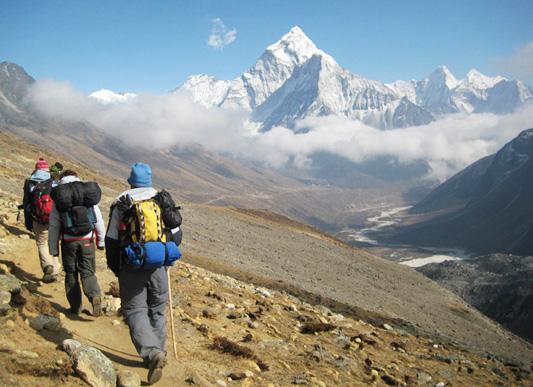
Cefalu Travel
Cefalu: Cefalù, one of the most beautiful villages in Italy, is one of the busiest holiday destinations and resorts on the island. Is located on the northern coast of Sicily, about 70 km from Palermo. Kephaloidion and Coephaledium for Greeks and Romans, meaning head or also top extremity. Gafludi for the Arabs, fortified city, and abundant waters.
The city is dominated by a monumental rock that rises up to 270 meters in height already known to the Phoenicians as “promontory of Hercules” on which the Temple of Diana stands, a megalithic building linked to the worship of the water, as indicated by the nearby cistern dating from the ninth century BC. The historic district is lying in the shadow of this bastion and clings around its beating heart which is undoubtedly the Duomo, a gigantic cathedral built by Roger II, the Norman.

Cefalu Sicily
According to a legend, the cathedral would be built in this city and not in Palermo, the capital of the kingdom, following a vow made to the Holy Saviour by Roger himself, who escaped a storm and landed on the beaches of the village. More likely are the motivations of a political-military nature, given the connotations of the territory and the undeniable characteristics of a natural fortress and the off the scale proportions of the Basilica, all magnified by the old city megalithic walls whose testimonies remain along the cliffs of the Giudecca (Postierla) and at the ancient Porta Terra (today Piazza Garibaldi).
While it may seem strange, this symbol of the power of a Norman king, he found inspired protagonists in the workforce and in the real Islamic architects. The design outline, in fact, is the same one as other masterpieces of Palermo, inspired by the magnificence of the tired and hammadid fortress-palaces typical of the Maghreb. Severe buildings, compact in the block of the two towers but bright due to the gold of the walls and the reflections of the mosaics. Inside, the imposing colonnade marks the rhythm of the environment and leads our attention to the benevolent gaze of the Christ Pantocrator, a beautiful Byzantine mosaic on a gold background with inscriptions in Greek and Latin. The wooden cross hanging in the central apse is attributed to Guglielmo da Pesaro. Also remarkable is the cloister adjoining the cathedral, decorated with columns and carved capitals and the Romanesque font.
Cefalu Italy
Beautiful Cefalù offers a rare combination of tourist attractions: one of Sicily’s finest beaches side-by-side with one of its greatest Arab-Norman architectural masterpieces. The squares, streets, and churches of this medieval town are so postcard-pretty that it’s no wonder director Giuseppe Tornatore chose to set parts of his much-loved film Cinema Paradiso here. With the regional train, Cefalù can actually be an easier destination to reach than Mondello – which is closer to Palermo but only has a bus option for public transportation. (Side note: the bus is terrible).
The train schedule can vary slightly depending on the day, but you can check the options for Palermo to Cefalù on the Trenitalia website. Tickets can be purchased online or in-person at the station. (And here are some more tips on how to buy train tickets in Italy).
The trains run approximately every hour between the city and the seaside town, so you can be in Cefalu within about 50 minutes. The train station is uphill from the beach, about a ten-minute walk away. And it is a short trip that is well worth it. While Palermo’s buzz of hectic scooters and activity can be invigorating, life in Cefalù is decidedly slower.
Domenico Cefalù

Cefalù is notable for beautiful sunsets, unpretentious charm, and a very appealing blend of ingredients for an Italian seaside holiday. Sandy beaches, a picturesque historic town on a rocky headland, some high culture in the shape of a fine Norman cathedral, decent transport links, Sicilian food, and sunshine all add up to make the town one of Italy’s most attractive seaside destinations.
Unlike the modern beach resorts and developed fishing villages which dot Italy’s coast, Cefalù has some grandeur in its past – it was important enough that one of Sicily’s Norman rulers, Roger II, would build a glorious cathedral here. While its later history was less distinguished, there are some substantial and elegant buildings in the town, as well as reminders of Sicily’s varied influences, not just Norman and Byzantine, but also Arab, Spanish, and finally Italian. Nowadays tourism is a big and profitable industry here, and the modern town spreads out along the coast from the centro storico (historic centre).
Beth Cefalu
One of Cefalù’s prime magnets for tourists is the sandy beach stretching alongside the town. It is very inviting, though visitors should be prepared to find the sands busy in the peak summer months of July and August, and partially occupied by fee-charging beach establishments.
Set in the medieval district, Cefalù’s other great tourist attraction is the town’s Duomo, a handsome and imposing two-towered Norman cathedral. Begun in 1131, this mighty church dominates the rooftops of the centro storico. The building’s interior is decorated with lovely mosaics created by twelfth-century Byzantine artists: a large Christ Pantocrator on a gold background dominating the apse, above the Madonna, archangels and Apostles. These gleaming mosaics are one of Sicily’s greatest sights; if you want more, take a trip to Monreale, outside Palermo. Alongside the church is its restored twelfth-century cloister (admission fee), which is an atmospheric space lined with double columns topped by curious capitals depicting an odd range of scenes, from Noah’s ark to strange contortionists.
Towering above the Duomo and the town centre is the massive crag called the Rocca. It’s a steep ascent to the top of the hill (take a bottle of water and don’t attempt the climb in very hot weather) but it’s well worth the effort. Near the top you’ll reach the evocative ruins of the so-called ‘Tempio di Diana’ (temple of Diana), an ancient megalithic stone structure which was given a modernisation in the 5th-century BC in the classical Greek style. Around the summit of the Rocca are superb views and various bits of old fortifications, including a stretch of (reconstructed) battlements.
Cefalu Hotels
Cefalù is within reach of the international airport at Palermo, which is served by direct budget flights from the UK. The two towns are connected by the Autostrada 20 and also by a railway line (with trains approximately hourly). Urban buses provide transport within Cefalù, and more bus services link the town with surrounding towns and villages. The railway station is in walking distance of the historic centre and beaches – to reach the Duomo, head right outside the station until you reach Via Matteotti, turn left and then just walk straight down this street, which turns into Corso Ruggero, the main artery of the centro storico.
It’s not a good idea to try driving right into the heart of Cefalù – if you are taking a car to a central hotel or B&B, contact them first to ask for directions and parking information.
We arrived in Cefalù by train from Agrigento (under three hours, with a change at Termini Imerese), and moved on to Palermo. In the summer, when there is a hydrofoil service operated by Ustica Lines, you could combine the town with the Aeolian Islands for a relaxing beaches-and-islands holiday.
Cefalu Sicily Hotels
The main tourist attraction in Cefalù is the cathedral, one of the most interesting medieval buildings in Sicily. According to legend, the Norman King Roger II was caught in a storm at sea and vowed to build a church if he were saved. Progress in completing the cathedral was slow and it was not consecrated until 1267, so the newer parts of the building departed considerably from the monumental proportions of the original plans.
The church reflects the various influences of Sicilian history – Norman, Latin, Greek, and Arab. The nave has two rows of granite columns with Byzantine capitals supporting arches, above which are richly painted wooden beams. There is a 12th-century font in the right side aisle and a 16th-century statue of Mary by Italian Renaissance sculptor Antonello Gagini in the left. In the choir, the side walls are embellished with ornamental plasterwork, and there are also 15th-century statues, but it is the mosaics on their gold background that will immediately draw your gaze. From the original cathedral, they are the work of Byzantine artists hired by Roger II, and they are dominated by the mosaic of Christ giving the blessing as ruler of the world, which lines the semi-circular dome of the apse. In spite of frequent restoration work since the 15th century, the mosaics of Cefalù are among the best-preserved in Sicily.
Also known as the church of Purgatory, Santo Stefano has one of the most beautiful facades in Cefalù. It’s delicately carved Baroque portal looks out onto a small square from atop a graceful double staircase with iron balustrades. Greenery and flowers make the square even more intimate. Its two names tell a bit of the church’s history. The original structure was built by the Brotherhood of St. Stephen, which in 1596 became the Brotherhood of the Souls in Purgatory. That fraternity bought adjacent property and built the new church, finishing it in 1668. Two centuries later, the pavement in the square was lowered, accounting for the double staircase. The interior has a large altarpiece picturing Christ giving the Eucharist to souls in Purgatory.
This church was completed in 1780, and its campanile is built in the remains of megalithic walls whose stones you can see at its base. It is also unusual for the placement of its two clocks. The flat façade has a loggia of golden stone with niches holding statues. The interior is quite simple, with a single nave and an altar installed in 1902, and a statue dedicated to Santa Maria Della Catena in memory of a 14th-century miracle in Palermo. At the base of the bell tower is a memorial to the local patriot, Salvatore Spinuzza, who was executed in this square in 1857, during the revolt for the liberation of Sicily from the Bourbons.
A winding, scenic road leads from Cefalù southwards to Gibilmanna, on the slopes of the 1,081-meter-high Pizzo Sant’Angelo, in the Madonie Mountains. In this beautiful wooded setting, you’ll find the pilgrimage convent of Gibilmanna. The church was built in the 17th and 18th centuries and houses a Madonna by Italian Renaissance sculptor Antonello Gagini (1478-1536) that is particularly revered. Every year on September 8, the festival of the birth of the Virgin Mary pilgrims come to the sanctuary from all over Sicily.
